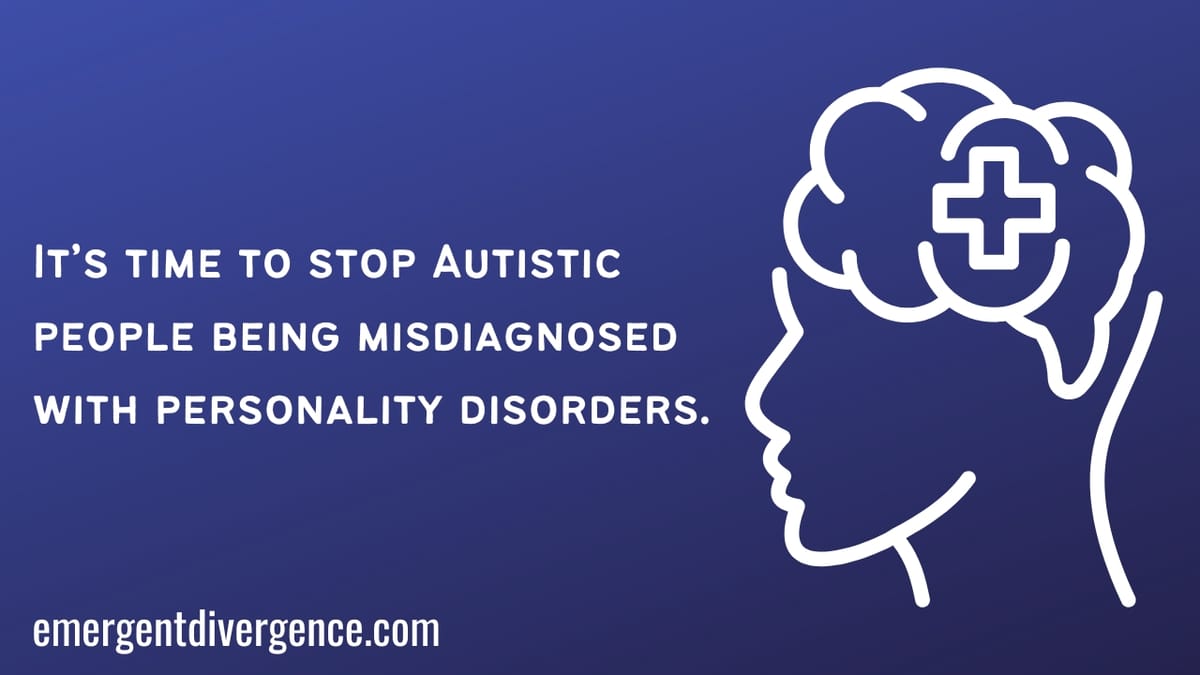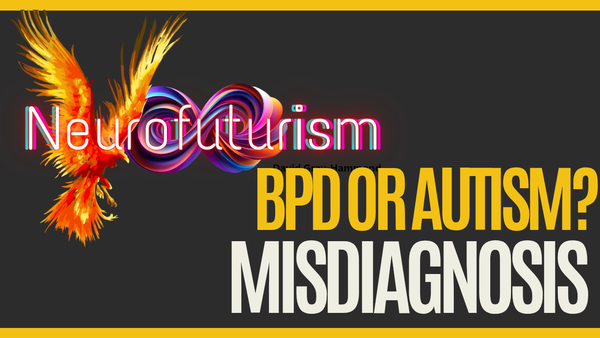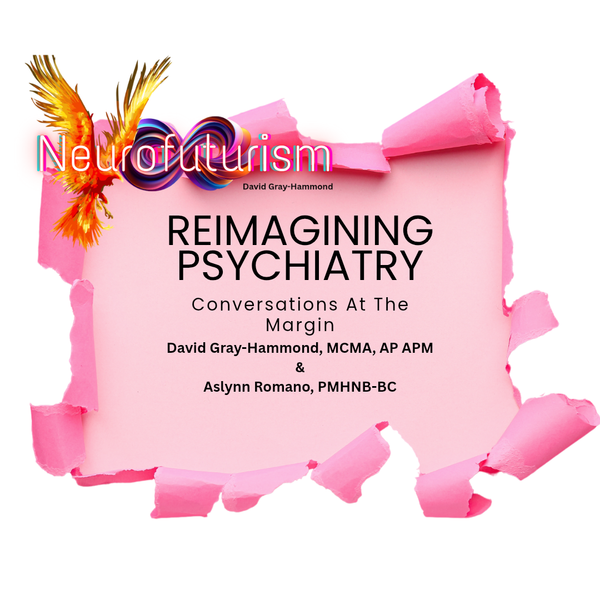The Link Between Autism and Borderline Personality Disorder
Our understanding of autism has grown exponentially since the days of Kanner and his ilk. Despite this, and the growing number of diagnostic referrals, misdiagnosis is still a regular occurrence. In terms of the misdiagnosis of autism, perhaps one of the most significant diagnoses to occur is person

Our understanding of autism has grown exponentially since the days of Kanner and his ilk. Despite this, and the growing number of diagnostic referrals, misdiagnosis is still a regular occurrence. In terms of the misdiagnosis of autism, perhaps one of the most significant diagnoses to occur is personality disorder. In particular, we need to talk about Borderline Personality Disorder (BPD), or as it is known in the UK, Emotionally Unstable Personality Disorder (EUPD).
What is a personality disorder and why is it relevant to discussing autism?
According to the UK National Health Service (NHS):
"A person with a personality disorder thinks, feels, behaves or relates to others very differently from the average person."
On the surface, this description is particularly relatable to an Autistic person. By virtue of our neurocognitive style, our experience of the world is notably different from that of the wider population. A personality disorder, however, presents a significant issue due to it's relationship with suicidality, criminality, and systemic mistreatment. Simply put, those diagnosed as such are more likely to experience societal rejection and institutionalisation, with many mental health professionals reported by those diagnosed as being overtly malicious towards them.
In the UK, personality disorders have traditionally been assigned by their DSM category. These include the some of the most common, such as Borderline Personality Disorder, named as such as it was viewed as the border between neurotic and psychotic presentation, but it also includes more heavily stigmatised diagnoses such as Antisocial Personality Disorder (ASPD) and Narcissisitic Personality Disorder (NPD). The latter are often associated with popularised ideaas of psychopathy and sociopathy, with those diagnosed being viewed as some of the most dangerous in society.
In terms of why a person may be diagnosed, Mind offer the following explanation:
"The way you think, feel, and behave causes you significant problems in daily life. For example, you may not feel like you can trust others. Or you may often feel abandoned, causing you or others distress in day-to-day relationships. You may also struggle with your identity and self-worth.
You experience these problems across different aspects of your life. For example, you may struggle to start or keep relationships, or control your feelings and behaviour. You may change your jobs, hobbies, goals or plans regularly. Some people self-harm or use drugs or alcohol to cope with intense emotions which feel frightening and overwhelming.
These problems have lasted for a long time, usually over 2 years. They may have started when you were a child or teenager and carried on into your adult life.
These problems are not caused by taking drugs or drinking alcohol, or by another medical condition."
Mind also continue to explain that current UK guidance asks for a categorisation of Mild, Moderate, or Severe to be given. This, again, is similar to current diagnostic practice for autism that asks for a categorisation of levels 1-3 depending on the person's support needs and functional limitations.
This is relevant to autism, not only because of the parallels in diagnostic criteria and procedure, but also because many Autistic people find themselves given this as a diagnosis as opposed to autism. Many of us find ourselves absorbed into the psychiatric system by virtue of this diagnosis when in reality we are Autistic.
I was diagnosed with Borderline Personality Disorder prior to my autism diagnosis
In my own experience, part of the issue has been the ambiguity in how we understand autism and mental health. While many Autistic people experience mental health problems, we also find that professionals fail to consider potential autism in people with complex wellbeing. For me, this meant that my psychosis, substance use, and self-injurious behaviour was attributed to Borderline Personality Disorder. I twice spent time in psychiatric inpatient units with that diagnosis. Staff in those settings were hostile and degrading, using the misdiagnosis as a justification for their unprofessional and abusive behaviour. Rather than being seen as an Autistic person in distress, I was viewed as manipulative and attention seeking. I was accused of feigning distress as a tool of control rather than having my needs met adequately.
Professionals lacked the professional and cultural competency to accurately diagnose me, and instead wielded a personality disorder diagnosis as a weapon of oppression. Even when I was correctly diagnosed with autism, my psychiatrist angrily refused to remove BPD from my records, and it took some 12 months or so to have my file accurately represent my experience. Even then, I was haunted by professionals who sought to reintroduce BPD back into my life. The attitude that Autistic people weren't like me; drug users and psychotic, was prevalent.
The gender disparity in BPD/EUPD diagnosis
Borderline Personality Disorder is a diagnosis that disproportionately impacts Autistic women and those Assigned Female At Birth (AFAB). BPD has become a diagnosis of medical misogyny, with some referring to it as "The New Hysteria" (Dorfman & Reynold, 2023). Women and AFAB people who struggle with intense emotions and strained relationships find themselves subjugated by a BPD diagnosis while the environmental triggers of their experience are minimised and obscured from view.
Kaplan (1983) highlighted that the DSM-III introduced a great deal of gender bias into psychiatry, with the majority male task-force responsible for its creation coding a male favouring and misogynistic normativity into what it considered to be health and unhealthy psychology. This became a prevalent issue alongside white supremacy and sanism, bolstering normative ideas and leading to the medicalisation of many minority groups. Simply put, the overt mention of "hysteria" may no longer exist, but it's sentiment very much remains.
Despite research suggesting that healthy men exhibit more traits of BPD than healthy women, the disparity remains. It has been hypothesised that this is due to things like "inappropriate an intense anger" being more heavily pathologised in those perceived as women than men (Henry & Cohen, 1983). For Autistic AFAB people, who may be more likely to be perceived as inappropriately angry or rude, there is a risk of conflation of Autistic presentations as being a disordered personality.
It should also be noted that contemporary literature highlights greater internalised presentations in women diagnosed with BPD as well as studies largely focusing on female, North American populations (Qian et al, 2022; Bozzatello et al, 2024). While the misogyny of the diagnosis may be routed in early iterations of diagnostic practice, there is a clear and divisive bias within modern literature. Internalisation is a common anecdotally reported feature of Autistic experience, highlighting yet another ambiguity between diagnostic criteria.
Experiences of autism misdiagnosed as Borderline Personality Disorder
Drawing on a study by Tamilson et al (2024), it is clear that there are some experiences in those misdiagnosed with BPD/EUPD that parallel what might considered core experiences in both Autistic people and those with a personality disorder diagnosis. In line with community anecdotes among late-diagnosed Autistic adults, many of those in the study report feeling estranged from their peers while their diagnosis was missed. This might understandably result in a level of rejection sensitivity, which is seen to be a significant feature of BPD/EUPD (Sato et al, 2020). I believe the important underlying experience here is the attribution of Autistic behaviours to perceived personality disorder. As in my own experience, we are not perceived to be having an expected reaction to a discriminatory experience (peer rejection for Autistic differences), instead we are positioned as having a flawed personality.
Something else reported in the study was the invalidation of traumatic experiences and responses to them. Trauma responses were viewed as "attention seeking" behaviours. This certainly reflects my own experience of the mental health system wherein I was treated as a nuisance rather than a service user. The aim it seems is to eliminate attention seeking rather than address the very real needs that lead to behaviours. This speaks broadly of the studies findings that BPD diagnoses were used as weapons of shame and blame rather than as part of a remediation of personal suffering. It's not that we are Autistic in a neurotypical world, it's that we are broken people with disordered personalities. We are liars, manipulators, attention seekers. The study found all of these sentiments in the experiences of those previously diagnosed with BPD.
The very real outcomes that Tamilson et al (2024) found was a fear of medical institutions and a feeling of not belonging anywhere, couple with a sense of not knowing themselves. For Autistic people who are already more likely to die by suicide (Royal College of Psychiatrists, 2021), something I have further explored in my own writing, this is a dangerous experience. It may also contribute to the difficult that Autistic people experience accessing health care (Shaw et al, 2024). I do not believe I am overstating when I say that misdiagnosis can be a life threatening experience.
A final point is the experience of professional attitudes surrounding BPD as a diagnosis. To sum this up, I first give you a quote from The Consensus Statement for People with Complex Mental Health Difficulties who are Diagnosed with a Personality Disorder:
"“Most of us would rather not use the term at all… We would like to abandon the term ‘personality disorder’ entirely.”
Referring to the Royal College of Psychiatrists position statement in response Harding (2020) asserts:
"However, the Royal College of Psychiatrists' position statement seems to ignore this preference, and references disordered personalities throughout, arguing that “there is a risk that changing terminology will simply cause confusion”. I fear this position underestimates the intellect of those calling for change and the mental vigour of psychiatrists. Meanwhile, the medical world seems able to survive the changing terminology of the ICD-11, in which all of the prefixes to “personality disorder” are redundant."
I put forward that the diagnosis of personality disorder says more about a clinicians world view than it does about the recipient. In the case of Autistic people misdiagnosed, it is a reflection of psychiatry's cult like normativity rather than a genuine attempt to help us.
The Implications of Autism's Frequent Misdiagnosis as Personality Disorder
This all sets forth a world in which not just autism is pathologised, but human experience itself. It is not just necessary to disambiguate autism from mental health conditions, nor is it enough to demedicalise Autistic experience. It is my fervent belief that issues like this will remain pervasive until the normativity that psychiatry has been built upon is dismantled and replaced. What that replacement may look like is the matter of much debate. Some want the total abolition of the field, while others see benefit in the existence of such institutions. Personally, I would like to see a shift away from the medical model of human distress toward something that recognises that human suffering is largely mediated by our environments, and that with the correct identification and support of our needs, humans can live a largely neutral life, with an even balance of positive and negative experiences. Current attitudes within psychiatry have paved the way for weaponised misdiagnosis, and it's time that this issue is addressed. Only when cultural competence and professional self-reflection are a truly standard practice can we begin to undo the normativity that has led to the rampant misdiagnosis of autism as a personality disorder. Autistic people deserve to know their true selves, and those diagnosed with a personality disorder deserve to be treated like human beings.
References
Bozzatello, P., Blua, C., Brandellero, D., Baldassarri, L., Brasso, C., Rocca, P., & Bellino, S. (2024). Gender differences in borderline personality disorder: a narrative review. Frontiers in Psychiatry, 15, 1320546.
Dorfman, N., & Reynolds, J. M. (2023). The New Hysteria: Borderline Personality Disorder and Epistemic Injustice. IJFAB: International Journal of Feminist Approaches to Bioethics, 16(2), 162-181.
Henry, K. A., & Cohen, C. I. (1983). The role of labeling processes in diagnosing borderline personality disorder. The American Journal of Psychiatry, 140(11), 1527-1529.
Kaplan, M. (1983). A woman's view of DSM-III. American Psychologist, 38(7), 786.
Lamb, N. (2018). The consensus statement for people with complex mental health difficulties who are diagnosed with a personality disorder. The Consensus Statement. Mind, available at: www. mind. org. uk/media-a/4408/consensus-statement-final. pdf (accessed 30 January 2023).
Qian, X., Townsend, M. L., Tan, W. J., & Grenyer, B. F. (2022). Sex differences in borderline personality disorder: A scoping review. Plos one, 17(12), e0279015.
Royal College of Psychiatrists. (2021). Suicide and autism [Slides]. https://www.rcpsych.ac.uk/docs/default-source/improving-care/nccmh/suicide-prevention/workshops-(wave-4)/wave-4-workshop-2/suicide-and-autism---slides.pdf?sfvrsn=bf3e0113_2
Sato, M., Fonagy, P., & Luyten, P. (2020). Rejection sensitivity and borderline personality disorder features: The mediating roles of attachment anxiety, need to belong, and self-criticism. Journal of personality disorders, 34(2), 273-288.
Shaw, S. C., Carravallah, L., Johnson, M., O’Sullivan, J., Chown, N., Neilson, S., & Doherty, M. (2024). Barriers to healthcare and a ‘triple empathy problem’may lead to adverse outcomes for autistic adults: A qualitative study. Autism, 28(7), 1746-1757.
Tamilson, B., Eccles, J. A., & Shaw, S. C. (2024). The experiences of autistic adults who were previously diagnosed with borderline or emotionally unstable personality disorder: A phenomenological study. Autism, 13623613241276073.


